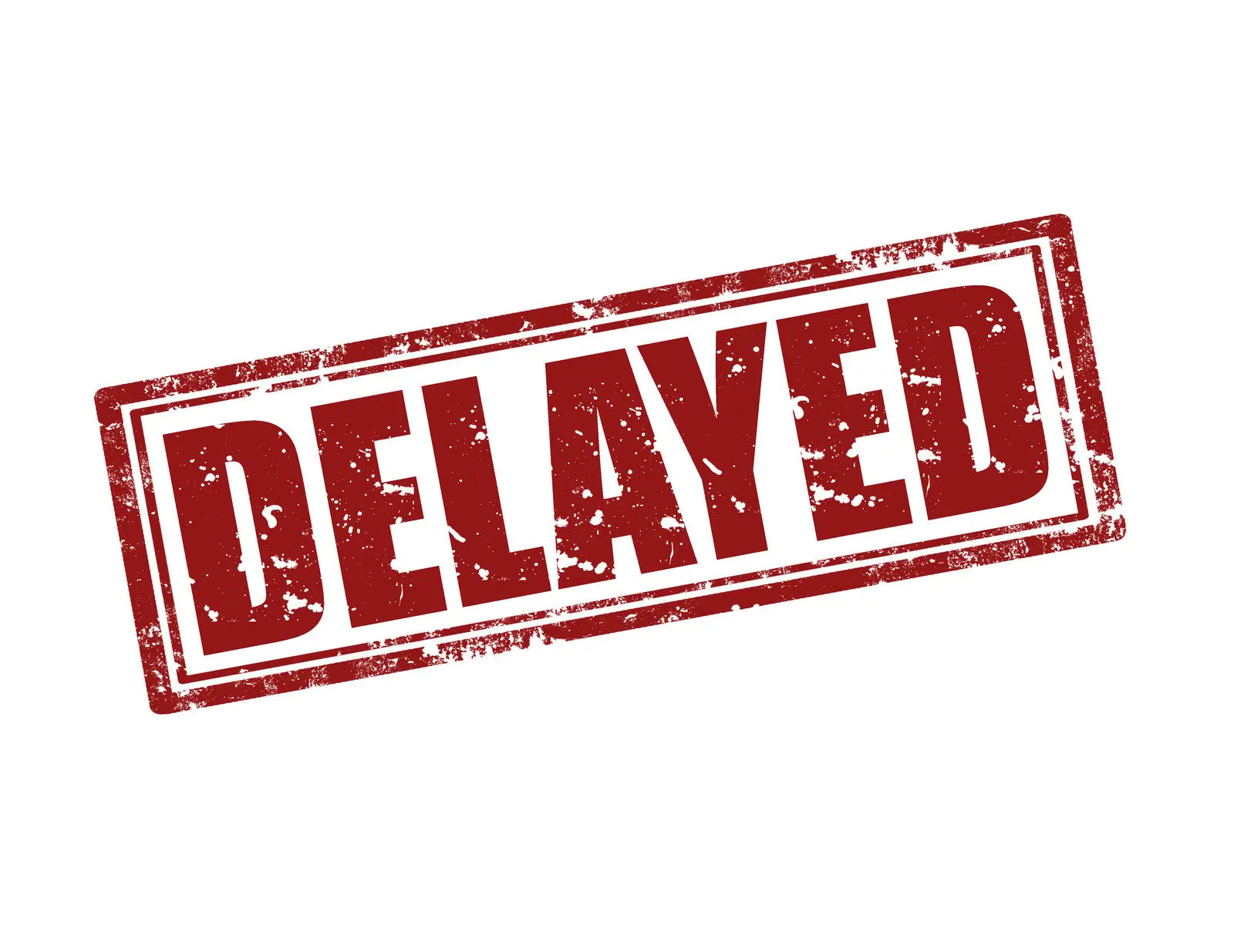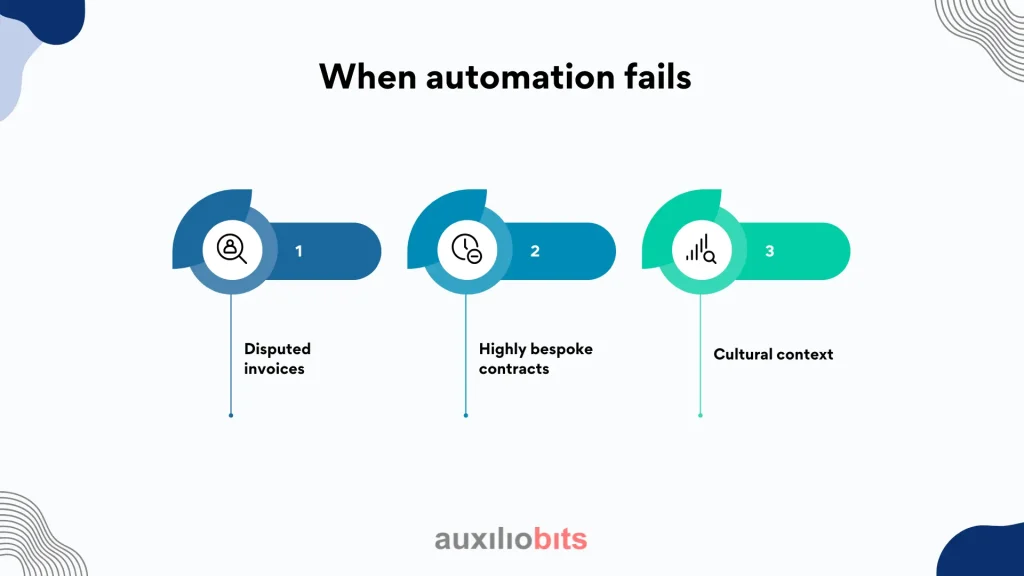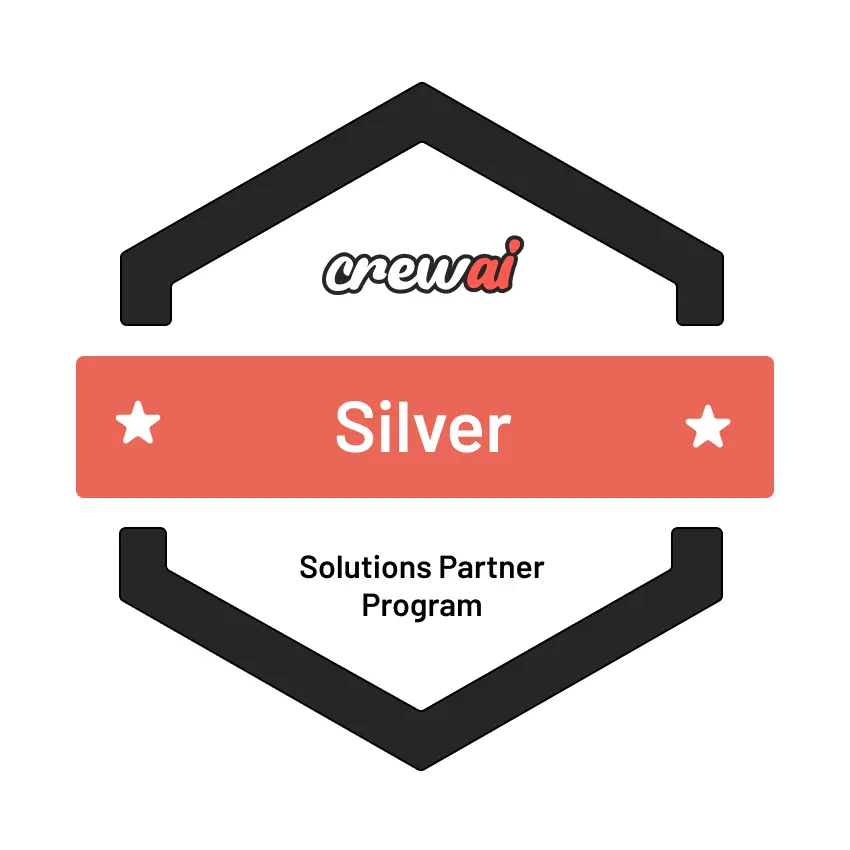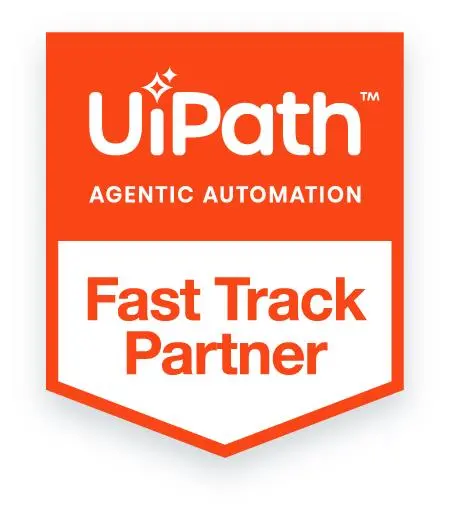
Key Takeaways
- Consistency beats improvisation – Automated reminders create a reliable cadence that shapes client behavior and removes the guesswork from receivables follow-up.
- Tone and timing matter more than volume – Too many reminders strain relationships; too few send the signal you’re not serious about collections. Nuance is the difference between professionalism and pestering.
- Escalation is about visibility, not aggression – Copying senior contacts or involving sales isn’t about threats, it’s about surfacing bottlenecks to people who can actually resolve them.
- Automation without judgment fails – Systems must allow for human overrides, dispute handling, and client-specific adjustments. Otherwise, you risk damaging trust.
- Discipline improves more than cash flow – A structured reminder and escalation process doesn’t just shorten DSO; it gives sales, finance, and leadership a shared, accurate picture of customer behavior.
Payment delays remain one of the most frustrating and expensive headaches in B2B operations. Finance leaders know the math: a late payment from a key customer doesn’t just hit cash flow; it ripples across procurement, payroll, and even creditworthiness. It’s rarely malicious; often, it’s disorganization, competing priorities, or simply “we forgot.” But the reality is, if left unmanaged, receivables start dictating the rhythm of the business instead of the other way around.
Over the past decade, automation tools have changed how companies address this issue. Yet the nuance lies not in simply “sending reminders,” but in how organizations structure those reminders, escalate when needed, and balance persistence with customer relationship management. Done well, the automated reminders reduce Days Sales Outstanding (DSO) by double digits. Done poorly, they become background noise that customers learn to ignore.
This article explores not just the technology but the real-world practices behind automated reminders and escalation frameworks.
Why reminders alone don’t solve the problem
Most finance teams already have some sort of reminder process. An email is triggered a week before the due date, another on the due date, and maybe one after. The challenge is that reminders, if poorly timed or repetitive, lose effectiveness quickly. Recipients begin treating them like marketing spam and delete them without reading.
Consider a mid-sized SaaS company: they set up reminders on day 5, day 10, and day 15 after the due date. They discovered open rates on those emails dropped dramatically after the first one. Why? Because the copy was identical, the “from” address was a generic finance inbox, and the system offered no escalation beyond emails. By day 15, customers knew exactly what to expect: another copy-paste message.
So, the insight here is that reminders only work if they are part of a structured sequence with escalating seriousness. Automation isn’t about volume; it’s about orchestration.
The architecture of effective automated reminders
A well-designed automated system mimics what a skilled collections agent would do manually, but scaled and standardized. It has variety, timing sensitivity, and escalation logic baked in.
Think of automated escalation in tools like UiPath or Power Automate as a disciplined way of making sure overdue invoices are not forgotten in someone’s inbox. Instead of a finance clerk manually checking spreadsheets and firing off reminders, you set up a workflow that does the legwork every day, spotting what’s overdue, nudging customers, and, if necessary, pulling in the right people at the right time.
In UiPath, that usually starts with a robot scheduled to scan the ERP or accounting database for invoices where the due date has slipped by, but the status still shows unpaid. From there, the robot doesn’t just flag; it can draft and send polite reminder emails directly through Outlook or SMTP, with all the details a customer might need right at hand: invoice number, amount, and even a payment link. But if that nudge doesn’t work, UiPath doesn’t stop.
The workflow can escalate by changing the sender from a generic “accounts receivable” inbox to a named finance manager, logging the step in Orchestrator, or even creating a case in Salesforce or Dynamics so that the sales team gets involved. What makes UiPath powerful here is its ability to juggle multiple systems at once and still hand unresolved cases over to a human via the Action Center, with a clear trail of who did what and when.
Some proven practices include:
Not everyone responds to email. Adding SMS, portal notifications, or even in-app nudges (for SaaS providers) raises visibility. One logistics firm reduced overdue invoices by 17% simply by layering WhatsApp reminders for repeat offenders.
Vary tone across stages
Early-stage reminders should be friendly and helpful (“Just a quick note that invoice #123 is due tomorrow”). By the second or third, the tone should shift, still professional, but firm. Automation platforms can template this tonal progression.
Contextual messaging
Reminders that only say “Your payment is overdue” are blunt instruments. Adding invoice numbers, links to online payment options, or even copies of the original PO gives the recipient fewer excuses to delay.
Dynamic timing
Automation should reflect customer behavior. A client who consistently pays on day 10 after the due date doesn’t need a barrage of reminders on day 1. Some systems now use machine learning to predict likely payment behavior and tailor timing accordingly.
Escalations: the underused lever
Reminders without escalation are like speed bumps without police patrol, annoying, but easy to ignore. Escalation is where the system signals that continued non-payment will have consequences. Importantly, escalation doesn’t have to be confrontational.
Examples of escalation strategies:
Hierarchy escalation
The first reminder comes from “Accounts Receivable.” The next might come from the Finance Manager. By the time the CFO’s name appears on the email, the psychological weight shifts. Customers know the issue is gaining visibility.
Payment blocks
Some ERPs allow configuration so overdue accounts cannot place new orders until payment is cleared. It’s a blunt tool, but in industries with tight margins (manufacturing, wholesale distribution), it’s surprisingly effective.
Legal language sparingly
The phrase “further non-payment may result in collection proceedings” has a deterrent effect. But if overused, it damages relationships. A tiered approach, where legal framing only appears in final-stage reminders, strikes a balance.
Automated escalation tickets
Advanced setups push unresolved cases into CRM or service platforms, flagging the sales team. A salesperson who risks losing commission because their customer isn’t paying is highly motivated to intervene.
One important caveat: escalation policies must align with customer segmentation. You don’t threaten your largest, strategic client with a payment block in the same way you would a high-risk, small-volume buyer. Automation must be configurable enough to differentiate.
Balancing persistence with customer relationships
This is the part that textbooks gloss over. You can absolutely drive down late payments by tightening reminders and escalations, but at what cost? In B2B, every reminder is also a touchpoint. Mishandle it, and you risk straining the commercial relationship.
Here’s where we often recommend companies formalize a “soft-then-hard” framework:
Soft phase (pre-due to 7 days after)
Helpful, informative, empathetic. Messages that assume good faith: “Perhaps this slipped through; here’s the link again.”
Hard phase (7–30 days after)
More direct language, a stricter tone, and mention of consequences.
Personalized outreach (after 30 days)
Escalation moves out of automation and into human handling. At this point, automation should hand over to collections staff or account managers.
Why this matters: automation shouldn’t aim to replace human judgment at the point where the relationship could fracture. It should filter the easy cases so humans focus only on true exceptions.
Real-world examples
Two short illustrations show the difference between theory and messy reality:
- Case 1: Global IT services firm
They rolled out automated reminders through their ERP, but left an escalation manual. The finance team was still chasing down 300+ overdue accounts each month. After introducing automated escalation, where overdue accounts triggered alerts to account managers, the number dropped to under 100 within six months. The automation didn’t “collect payments” directly; it forced accountability into the sales side. - Case 2: Small manufacturing supplier
Their initial reminder system spammed customers every three days. Several long-term clients complained, saying it felt harassing. The supplier shifted to a three-stage escalation: a gentle email before the due date, a firm reminder after 10 days, and a sales manager call after 20 days. Interestingly, their DSO improved, and customer satisfaction scores also went up, because clients appreciated the professionalism compared to the earlier “reminder barrage.”
Both cases illustrate that automation succeeds when it reinforces business rules, not when it blindly runs in the background.
Why organizations resist escalation
Despite the benefits, many companies hesitate to formalize escalation. Reasons for this might be as follows:
Fear of damaging relationship
Especially with strategic accounts. But in reality, professional, measured escalation often earns respect, as it shows the company runs a disciplined operation.
Internal silos
Finance assumes sales will handle it; sales assumes finance will. Automation helps here by codifying who gets notified when, instead of relying on “handshakes.”
Tooling limitations
Legacy ERPs often lack configurable reminder flows. Modern AR platforms like HighRadius, Billtrust, or even Salesforce add-ons make it easier, but cost can be a barrier.
Still, avoiding escalation altogether often results in the worst of both worlds: weak collections and mounting frustration internally.
When automation fails
It’s worth acknowledging that not every scenario lends itself to automation. A few examples are as follows :

Disputed invoices
If the customer believes the invoice is incorrect, no reminder sequence will solve it. The automated reminders irritate the customer further.
Highly bespoke contracts
Where payment terms vary across projects or milestones, rigid automation can create mismatches.
Cultural context
In some markets, aggressive escalation can backfire as well. For example, in parts of Asia, relationship-centric business culture means a direct legal warning may damage more than it helps.
This is why finance teams must configure exceptions and integrate escalation workflows with dispute resolution processes.
The subtle ROI
It’s tempting to measure success only in terms of reduced DSO. But the ripple effects go further:
- Lower manual workload for AR teams, freeing them for analysis rather than chasing.
- More predictable cash flow, which reduces reliance on credit lines.
- Improved customer experience when reminders are clear, consistent, and respectful.
- Better data quality, since automation forces invoice metadata (due dates, references, payment methods) to be standardized.
Of course, ROI varies. A high-volume B2B SaaS firm might see immediate returns; a low-volume, project-based consultancy less so. That’s another nuance leaders should recognize: automation works best where scale creates repetition.
Conclusion
Automating payment reminders and escalations is not about chasing clients faster—it’s about building consistency, accountability, and clarity into the receivables process. Technology like UiPath or Power Automate can orchestrate cadence, tone, and escalation flawlessly, but true success lies in design: the human logic embedded in every workflow.
When done right, automation transforms the “collections” process from an awkward, reactive exercise into a strategic, insight-rich system that improves relationships, cash predictability, and internal alignment.
The organizations that win are those that treat reminders not as noise, but as a rhythm—a predictable beat that customers learn to trust, respect, and respond to.








